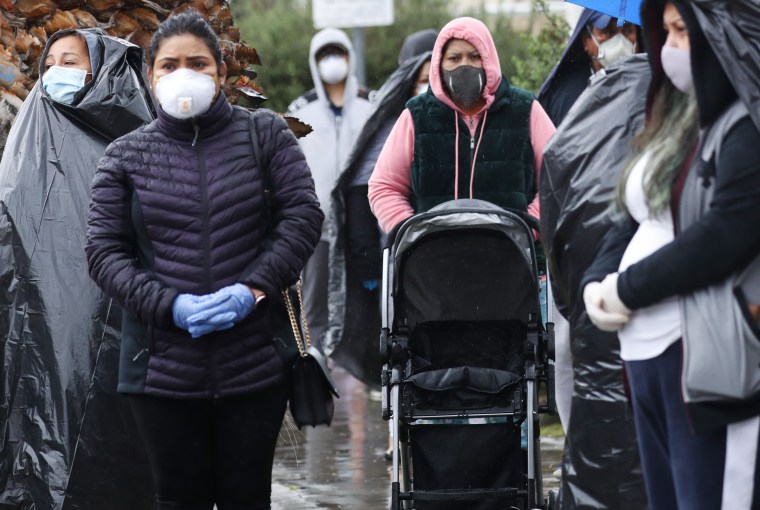Women who work entered the year on a high note, with sky-high employment numbers thanks, in part, to the rapid expansion of industries such as health care and education. However, the impact of the coronavirus has wiped out nearly all of women’s gains in the workforce over the last decade — leading some economists to call the current crisis a “she-cession.”
“This is historic and unprecedented,” said C. Nicole Mason, president and chief executive officer of the Institute for Women's Policy Research. “Women have never been the face of the economic impact in terms of job loss. This is really uncharted territory.”
While the country’s two largest economic crises — the Great Depression and the 2008 recession — left more men than women unemployed, women have been disproportionately affected by job losses as a result of the coronavirus, according to the Bureau of Labor Statistics.
In April, the unemployment rate for women increased to almost 3 percentage points above the rate for men — 16.2 percent compared with 13.5 percent, according to an Institute for Women's Policy Research analysis of the Bureau of Labor Statistics employment data.
Young workers and women of color have seen consistently high unemployment rates because they are more likely to work in leisure and retail industries, which have been pummeled by stay-at-home orders to curb new coronavirus cases, according to the analysis.
But even in sectors of the market where men are more dominant, women are losing more jobs, according to Elise Gould, a senior economist with the Economic Policy Institute. In transportation and warehousing, for instance, women make up about one-quarter of all jobs — but they represent 39 percent of job losses in those sectors.
“This part of historical discrimination where women are less likely to be managers and more likely to be front line workers,” said Gould.
The coronavirus has exposed entrenched inequalities in the country’s economic structure, including what is called occupational segregation, an economic term to describe how workers are distributed across occupations based upon demographic characteristics, said Gould.
Hispanic women’s unemployment rate reached about 20 percent in May, with Black women second at 16 percent compared to a 15 percent unemployment rate for white women, according to the Bureau of Labor Statistics.
This is because Black and Latina women are more likely to be in the service sector, which was the first to be impacted by furloughs and layoffs, said Mason with the Institute for Women's Policy Research.
“These are lower wage jobs with less job security and low pay,” she said. “When we think about recovery, it’s going to take a lot for women to get back on their feet because many of them were struggling before the pandemic.”
“When we think about recovery, it’s going to take a lot for women to get back on their feet because many of them were struggling before the pandemic.”
A retail worker in California who asked to remain anonymous for fear of retaliation said that her discount store reopens on Friday, but she may not be scheduled for hours if people aren’t coming out to shop.
“I’m upside down on rent, behind on bills, I’ve deferred my student loan,” she said. “I’m struggling.”
She lives in a household with her grandmother, parents, fiancé and siblings. She and her fiancé are the main breadwinners for the family and with both of them out of work, her family is struggling.
“Losing my income hit us hard,” she said. “My mom and dad were disabled in a major accident together almost 15 years ago, they both got a stimulus but it was also gone quickly to their medical expenses.”
The recovery for women is expected to be slow as schools and child care centers remain closed. A recent Morning Consult survey found that women report they have been doing a greater share of the home schooling and parenting duties throughout the pandemic — although a YouGov survey found men think they are bearing the brunt of responsibilities.
Women recovered slowly during the Great Recession of 2008, even though they made up a fraction of total job losses. Men lost over 6 million jobs, or 8.5 percent of their total December 2007 employment. By comparison, 2.7 million women lost their job, according to the Economic Policy Institute. But by 2014, women were still lagging in job growth.
In order to not deepen inequities in job gains, the country needs to address issues of child care, paid sick leave and other challenges to women joining and staying in the workforce, Gould and Mason agreed.
“If we don’t take necessary steps, then women will not have a full recovery,” said Mason. “We need targeted programs so they can do that.”
